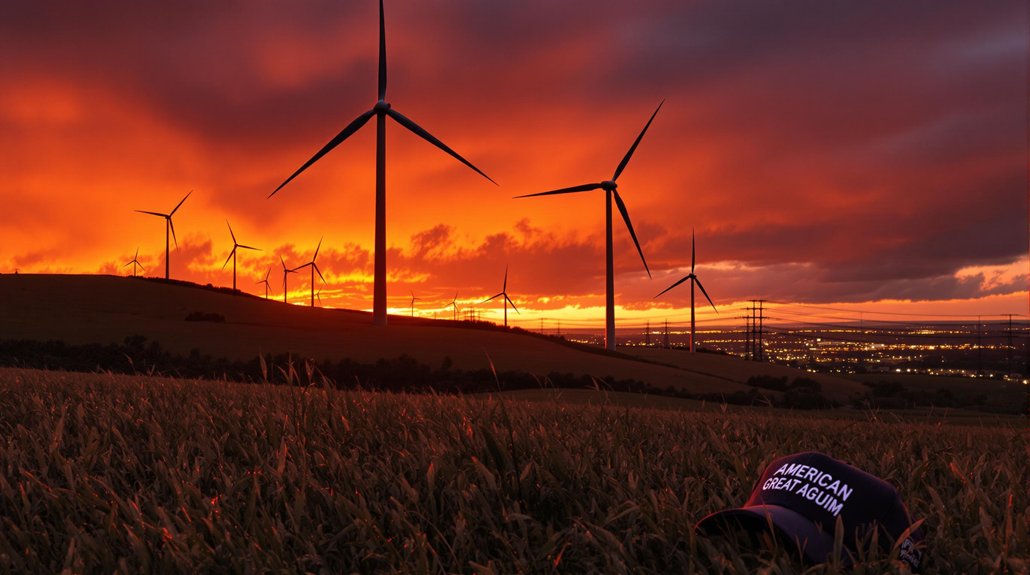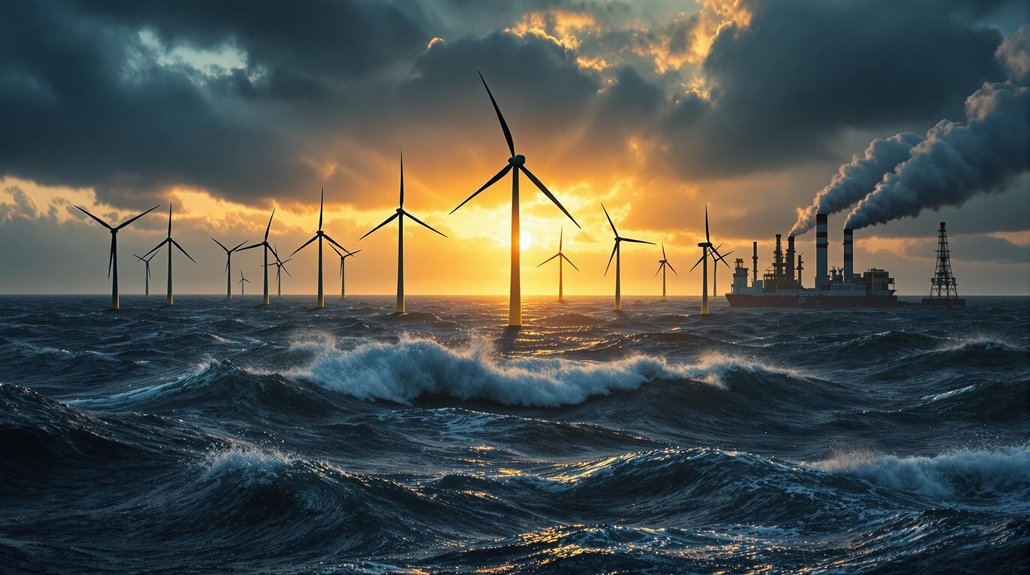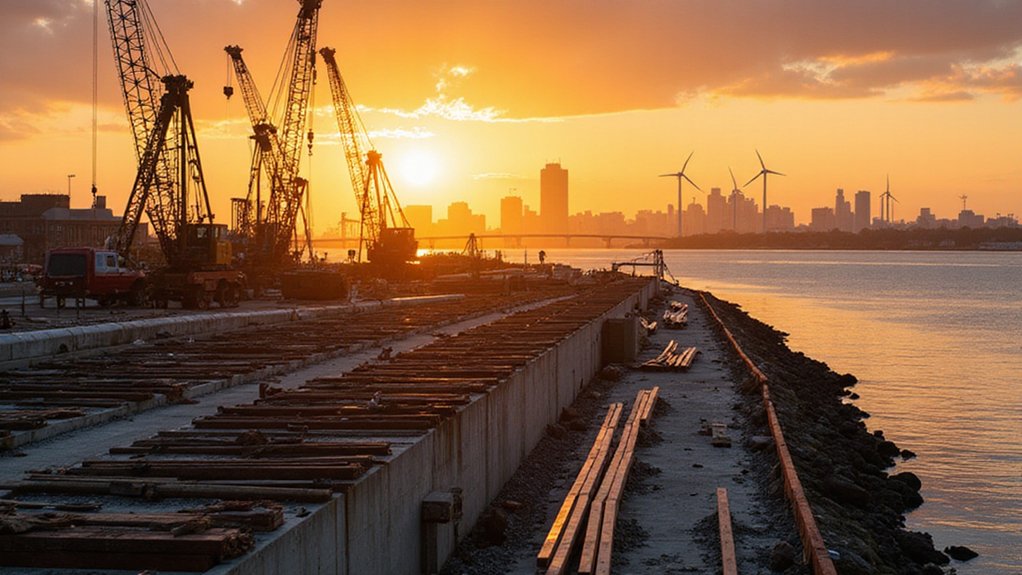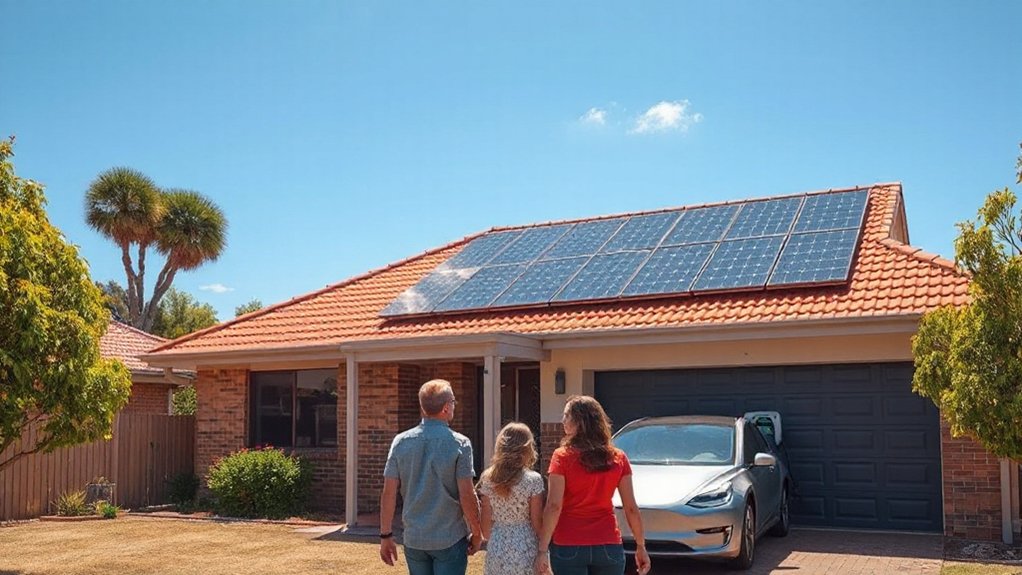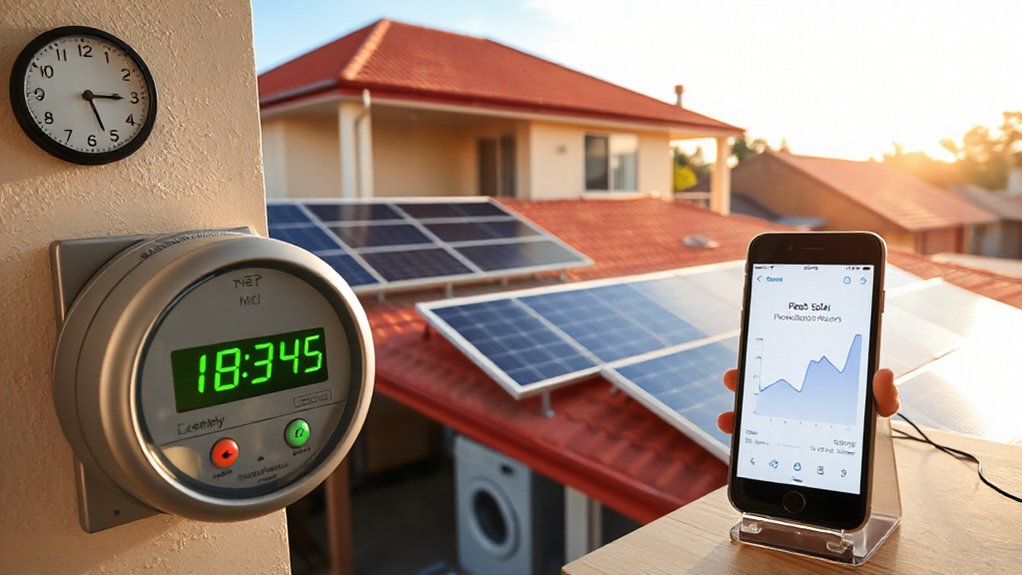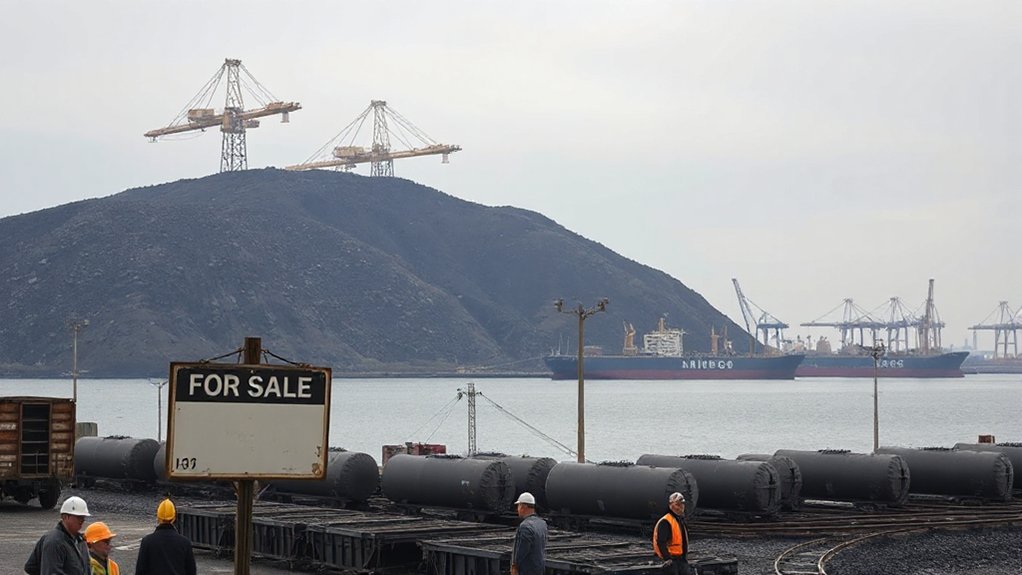Europe is rapidly expanding its offshore wind capacity to reach 100 GW by 2030 and 300 GW by 2050. Technological advances, including 16 MW turbines and robot-assisted manufacturing, are expected to cut costs by 30% within the decade. The expansion creates hundreds of jobs, with the EU investing €17.3 million in Polish manufacturing facilities. Projects also integrate storage solutions and green hydrogen production, positioning Europe as a global renewable energy leader. These developments promise significant environmental and economic benefits.
As Europe races toward its renewable energy goals, offshore wind power is emerging as a central pillar of the continent’s green transformation. The EU has set an ambitious target to install 100 gigawatts (GW) of offshore wind capacity by 2030, with plans to reach 300 GW by 2050. This massive expansion is being coordinated through the North Seas Energy Cooperation, which aims to tender 15 GW annually. The predictable tendering schedule is expected to attract significant investment to the sector.
The economic impact of this wind transformation is substantial. New facilities are creating hundreds of jobs across Europe, with one factory in Poland alone generating over 450 direct roles. The EU is supporting this growth with significant funding, including €17.3 million for turbine manufacturing in Poland, strengthening the supply chain and boosting local economies. These projects provide valuable lease payments to landowners hosting wind installations, creating additional revenue streams for local communities.
Creating thousands of green jobs and revitalizing local economies, Europe’s offshore wind revolution represents a sustainable economic catalyst for the continent.
Technology is driving rapid advancement in the sector. New turbines with capacities up to 16 MW are being developed, nearly double the size of existing models. Robot-assisted manufacturing is reducing defects and waste, while innovations like hybrid systems are integrating wind power with storage and green hydrogen production. The United Kingdom’s clean energy strategy includes a 5 GW hydrogen goal that complements its offshore wind expansion.
These technological improvements are expected to cut offshore wind energy costs by 30% by 2030. Larger turbines produce more power per unit, while multitechnology projects, such as combining wind farms with interconnectors, reduce overall infrastructure expenses. This makes renewable energy increasingly competitive with traditional power sources.
Denmark’s energy island project showcases the future of offshore wind, aiming to connect up to 10 GW of power generation across multiple countries. These islands will serve as hubs for electricity distribution and green hydrogen production.
The environmental benefits are equally impressive. Offshore wind farms help Europe avoid millions of tonnes of CO₂ emissions each year, supporting the EU’s target of 45% renewable energy by 2030. By utilizing vast offshore spaces, these projects minimize land use while maximizing clean energy production.
As infrastructure expands to handle larger turbines and more complex projects, Europe’s offshore wind transformation continues to gain momentum, positioning the continent as a global leader in renewable energy.


